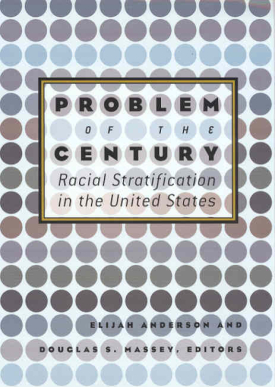
Problem of the Century
About This Book
In 1899 the great African American scholar, W.E.B. DuBois, published The Philadelphia Negro, the first systematic case study of an African American community and one of the foundations of American sociology. DuBois prophesied that the color line would be the problem of the twentieth century. One hundred years later, Problem of the Century reflects upon his prophecy, exploring the ways in which the color line is still visible in the labor market, the housing market, education, family structure, and many other aspects of life at the turn of a new century.
The book opens with a theoretical discussion of the way racial identity is constructed and institutionalized. When the government classifies races and confers group rights upon them, is it subtly reenforcing damaging racial divisions, or redressing the group privileges that whites monopolized for so long? The book also delineates the social dynamics that underpin racial inequality. The contributors explore the causes and consequences of high rates of mortality and low rates of marriage in black communities, as well as the way race affects a person's chances of economic success. African Americans may soon lose their historical position as America's majority minority, and the book also examines how race plays out in the sometimes fractious relations between blacks and immigrants. The final part of the book shows how the color line manifests itself at work and in schools. Contributors find racial issues at play on both ends of the occupational ladder—among absentee fathers paying child support from their meager earnings and among black executives prospering in the corporate world. In the schools, the book explores how race defines a student's peer group and how peer pressure affects a student's grades.
Problem of the Century draws upon the distinguished faculty of sociologists at the University of Pennsylvania, where DuBois conducted his research for The Philadelphia Negro. The contributors combine a scrupulous commitment to empirical inquiry with an eclectic openness to different methods and approaches. Problem of the Century blends ethnographies and surveys, statistics and content analyses, census data and historical records, to provide a far-reaching examination of racial inequality in all its contemporary manifestations.
ELIJAH M. ANDERSON is Charles and William Day Professor of Social Sciences, University of Pennsylvania.
DOUGLAS S. MASSEY is the Dorothy Swaine Thomas Professor of Sociology and Chair of the Department of Sociology, University of Pennsylvania.
CONTRIBUTORS: Linda H. Aiken, Ivar Berg, Mary Blair-Loy, Camille Zubrinsky Charles, Randall Colins, Kathryn Edin, Irma T. Elo, Frank F. Furstenberg Jr., Jerry A. Jacobs, Grace Kao, Robin Leidner, Janice F. Madden, Ewa Morawska, Timothy J. Nelson, Samuel H. Preston, Douglas M. Sloane, Tukufu Zuberi.
RSF Journal
View Book Series
Sign Up For Our Mailing List
Apply For Funding
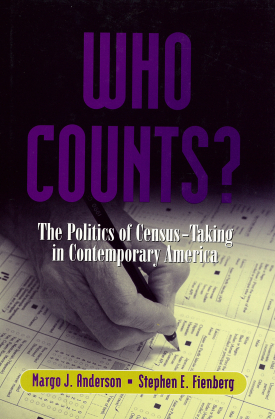
Who Counts?
About This Book
One of Choice Magazine's Outstanding Academic Books of 2000
For those interested in understanding the historical and scientific context of the census adjustment controversy, Who Counts? is absolutely essential reading. —Science
Ever since the founding fathers authorized a national headcount as the means of apportioning seats in the federal legislature, the decennial census has been a political battleground. Political power, and more recently the allocation of federal resources, depend directly upon who is counted and who is left out. Who Counts? is the story of the lawsuits, congressional hearings, and bureaucratic intrigues surrounding the 1990 census. These controversies formed largely around a single vexing question: should the method of conducting the census be modified in order to rectify the demonstrated undercount of poor urban minorities? But they also stemmed from a more general debate about the methods required to count an ever more diverse and mobile population of over two hundred million. The responses to these questions repeatedly pitted the innovations of statisticians and demographers against objections that their attempts to alter traditional methods may be flawed and even unconstitutional.
Who Counts? offers a detailed review of the preparation, implementation, and aftermath of the last three censuses. It recounts the growing criticisms of innaccuracy and undercounting, and the work to develop new enumeration strategies. The party shifts that followed national elections played an increasingly important role in the politization of the census, as the Department of Commerce asserted growing authority over the scientific endeavors of the Census Bureau. At the same time, each decade saw more city and state governments and private groups bringing suit to challenge census methodology and results. Who Counts? tracks the legal course that began in 1988, when a coalition led by New York City first sued to institute new statistical procedures in response to an alleged undercount of urban inhabitants. The challenge of accurately classifying an increasingly mixed population further threatens the legitimacy of the census, and Who Counts? investigates the difficulties of gaining unambiguous measurements of race and ethnicity, and the proposal that the race question be eliminated in favor of ethnic origin. Who Counts? concludes with a discussion of the proposed census design for 2000, as well as the implications of population counts on the composition and size of Congress. This volume reveals in extraordinary detail the interplay of law, politics, and science that propel the ongoing census debate, a debate whose outcome will have a tremendous impact on the distribution of political power and economic resources among the nation's communities.
MARGO J. ANDERSON is professor of history and urban studies at the University of Wisconsin–Madison.
STEPHEN E. FIENBERG is Maurice Falk University Professor of Statistics and Social Change at Carnegie Mellon University.
A Volume in the RSF Census Series
RSF Journal
View Book Series
Sign Up For Our Mailing List
Apply For Funding
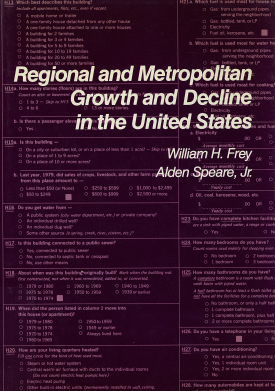
Regional and Metropolitan Growth and Decline in the United States
About This Book
During the 1970s, several striking population shifts attracted widespread attention and colorful journalistic labels. Urban gentrification, the rural renaissance, the rise of the Sunbelt—these phenomena signaled major reversals in long-term patterns of population distribution. In Regional and Metropolitan Growth and Decline in the United States, authors Frey and Speare place such reversals in context by examining a rich array of census data.
This comprehensive study describes new population distribution patterns, explores their consequences, and evaluates competing explanations of current trends. The authors also provide an in-depth look at the changing race, status, and household demographics of the nation's largest cities and discuss the broad societal forces precipitating such changes. Frey and Speare conclude that the 1970s represented a "transition decade" in the history of population distribution and that patterns now emerging do not suggest a return to the past.
With impressive scope and detail, this volume offers an unmatched picture of regional growth and decline across the United States.
WILLIAM H. FREY is faculty associate at the Population Studies Center, The University of Michigan.
ALDEN SPEARE, JR. is professor of sociology at Brown University.
A volume in the Population of the United States in the 1980s series.
A Volume in the RSF Census Series
Download
RSF Journal
View Book Series
Sign Up For Our Mailing List
Apply For Funding
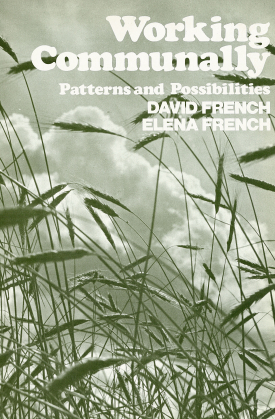
Working Communally
About This Book
Examines an alternative to the old patterns of living and working in the prevailing social system—the communal work place where work, recreation, and living space are brought together in a unified setting. The authors deal with a number of questions the communal work group faces, including the selection of projects, the choice of technologies and legal structure, and the means for determining economic viability. Past American and European communitarian movements are traced, as well as the nature and limitations of the new community experiments of the 1960s and 1970s.
DAVID FRENCH is assistant professor of economics at Johnson State College, Vermont.
ELENA FRENCH is assistant professor of social sciences at Johnson State College, Vermont.
Download
RSF Journal
View Book Series
Sign Up For Our Mailing List
Apply For Funding
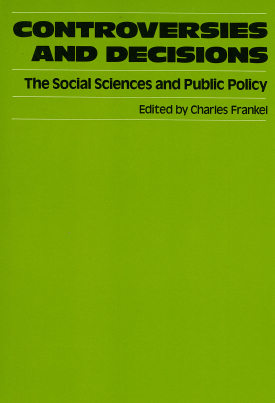
Controversies and Decisions
About This Book
Explores the various aspects of recent debates over the independence of the social sciences. The contributors are Kenneth E. Boulding, Harvey Brooks, Jonathan R. Cole, Stephen Cole, Lee J. Cronbach, Paul Doty, Yaron Ezrahi, Charles Frankel, H. Field Haviland, Hugh Hawkins, Harry G. Johnson, Robert Nisbet, Nicholas Rescher, Edward Shils, and Adam Yarmolinksy. The essays deal with such topics as the relation of "values" to "facts" in social science inquiry; the interplay of theoretical and practical considerations; the moral obligations of social science investigators in political contexts; and the ways and means of protecting and advancing the autonomy of the social sciences.
CHARLES FRANKEL is Old Dominion Professor of Philosophy and Public Affairs at Columbia University.
CONTRIBUTORS: Kenneth E. Boulding, Harvey Brooks, Jonathan Cole, Stephen Cole, Lee J. Cronbach, Paul Doty, Yaron Ezrahi, Charles Frankel, H. Field Haviland, Hugh Hawkins, Harry G. Johnson, Robert Nisbet, Nicholas Rescher, Edward Shils, and Adam Yarmolinsky.
Download
RSF Journal
View Book Series
Sign Up For Our Mailing List
Apply For Funding
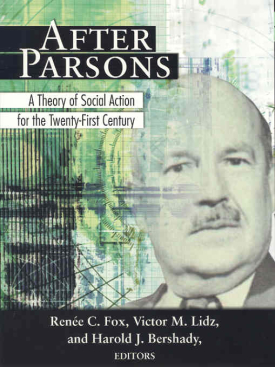
After Parsons
About This Book
Esteemed twentieth-century sociologist Talcott Parsons sought to develop a comprehensive and coherent scheme for sociology that could be applied to every society and historical epoch, and address every aspect of human social organization and culture. His theory of social action has exerted enormous influence across a wide range of social science disciplines. After Parsons, edited by Renée Fox, Victor Lidz, and Harold Bershady, provides a critical reexamination of Parsons' theory in light of historical changes in the world and advances in sociological thought since his death.
After Parsons is a fresh examination of Parsons' theoretical undertaking, its significance for social scientific thought, and its implications for present-day empirical research. The book is divided into four parts: Social Institutions and Social Processes; Societal Community and Modernization; Sociology and Culture; and the Human Condition. The chapters deal with Parsons' notions of societal community, societal evolution, and modernization and modernity. After Parsons addresses major themes of enduring relevance, including social differentiation and cultural diversity, social solidarity, universalism and particularism, and trust and affect in social life. The contributors explore these topics in a wide range of social institutions—family and kinship, economy, polity, the law, medicine, art, and religion—and within the context of contemporary developments such as globalization, the power of the United States as an "empireless empire," the emergence of forms of fundamentalism, the upsurge of racial, tribal, and ethnic conflicts, and the increasing occurence of deterministic and positivistic thought.
Rather than simply celebrating Parsons and his accomplishments, the contributors to After Parsons rethink and reformulate his ideas to place them on more solid foundations, extend their scope, and strengthen their empirical insights. After Parsons constitutes the work of a distinguished roster of American and European sociologists who find Parsons' theory of action a valuable resource for addressing contemporary issues in sociological theory. All of the essays in this volume take elements of Parsons' theory and critique, adapt, refine, or extend them to gain fresh purchase on problems that confront sociologists today.
RENÉE C. FOX is the Annenberg Professor Emerita of the Social Sciences and senior fellow at the Center for Bioethics at the University of Pennsylvania and research associate at Queen Elizabeth House at the University of Oxford.
VICTOR M. LIDZ, a sociologist, is assistant professor in the Department of Psychiatry at Drexel University College of Medicine.
HAROLD J. BERSHADY is professor emeritus of sociology at the University of Pennsylvania.
CONTRIBUTORS: Jeffrey C. Alexander, Robert N. Bellah, Harold J. Bershady, Charles Camic, Renée Fox, Uta Gerhardt, Mark Gould, Donald N. Levine, Victor M. Lidz, Giuseppe Sciortino, Neil J. Smelser, Helmut Staubmann, Jeremy Tanner, Edward A. Tiryakian, and Harald Wenzel
Download
RSF Journal
View Book Series
Sign Up For Our Mailing List
Apply For Funding
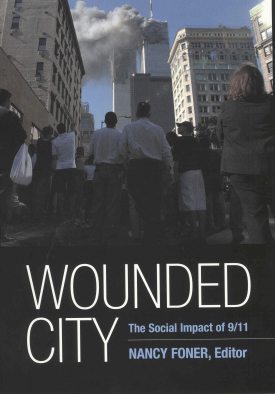
Wounded City
About This Book
New York has eight million deeply personal and unique stories of pain and perseverance from September 11, 2001. But the toll of tragedy is greater than the anguish it inflicts on individuals—communities suffer as well. In Wounded City, editor Nancy Foner brings together an accomplished group of scholars to document how a broad range of communities—residential, occupational, ethnic, and civic—were affected and changed by the World Trade Center attacks.
Using survey data and in-depth ethnographies, the book offers sophisticated analysis and gives voice to the human experiences behind the summary statistics, revealing how the nature of these communities shaped their response to the disaster. Sociologists Philip Kasinitz, Gregory Smithsimon, and Binh Pok highlight the importance of physical space in the recovery process by comparing life after 9/11 in two neighborhoods close to ground zero—Tribeca, which is nestled close to the city’s downtown, and Battery Park City, which is geographically and structurally separated from other sections of the city. Melanie Hildebrandt looks at how social solidarity changed in a predominantly Irish, middle class community that was struck twice with tragedy: the loss of many residents on 9/11 and a deadly plane crash two months later. Jennifer Bryan shows that in the face of hostility and hate crimes, many Arab Muslims in Jersey City stressed their adherence to traditional Islam. Contributor Karen Seeley interviews psychotherapists who faced the challenge of trying to help patients deal with a tragedy that they themselves were profoundly affected by. Economist Daniel Beunza and sociologist David Stark paint a picture of organizational resilience as they detail how securities traders weathered successive crises after evacuating their downtown office and moving temporarily to New Jersey. Francesca Polletta and Lesley Wood look at a hopeful side of a horrible tragedy: civic involvement in town meetings and public deliberations to discuss what should be done to rebuild at ground zero and help New Yorkers create a better future in the footprints of disaster.
New Yorkers suffered tremendous losses on September 11, 2001: thousands of lives, billions of dollars, the symbols of their skyline, and their peace of mind. But not lost in the rubble of the World Trade Center were the residential, ethnic, occupational, and organizational communities that make up New York’s rich mosaic. Wounded City gives voice to some of those communities, showing how they dealt with unforeseen circumstances that created or deepened divisions, yet at the same brought them together in suffering and hope. It is a unique look at the aftermath of a devastating day and the vitality of a diverse city.
NANCY FONER is Distinguished Professor of Sociology at Hunter College and the Graduate Center, City University of New York.
CONTRIBUTORS: Daniel Buenza, Jennifer L. Bryan, Margaret M. Chin, Monisha Das Gupta, Kai Erikson, Sandra Garcia, Irwin Garfinkel, Melanie D. Hildebrandt, Philip Kasinitz, Neeraj Kaushal, William Kornblum, Steven Lang, Binh Pok, Francesca Polletta, Julia Rothenberg, Karen Seeley, Gregory Smithsimon, David Stark, Julien Teitler, Lesley Wood.
A September 11 Initiative Volume
RSF Journal
View Book Series
Sign Up For Our Mailing List
Apply For Funding
Pagination
- Previous page
- Page 79
- Next page
